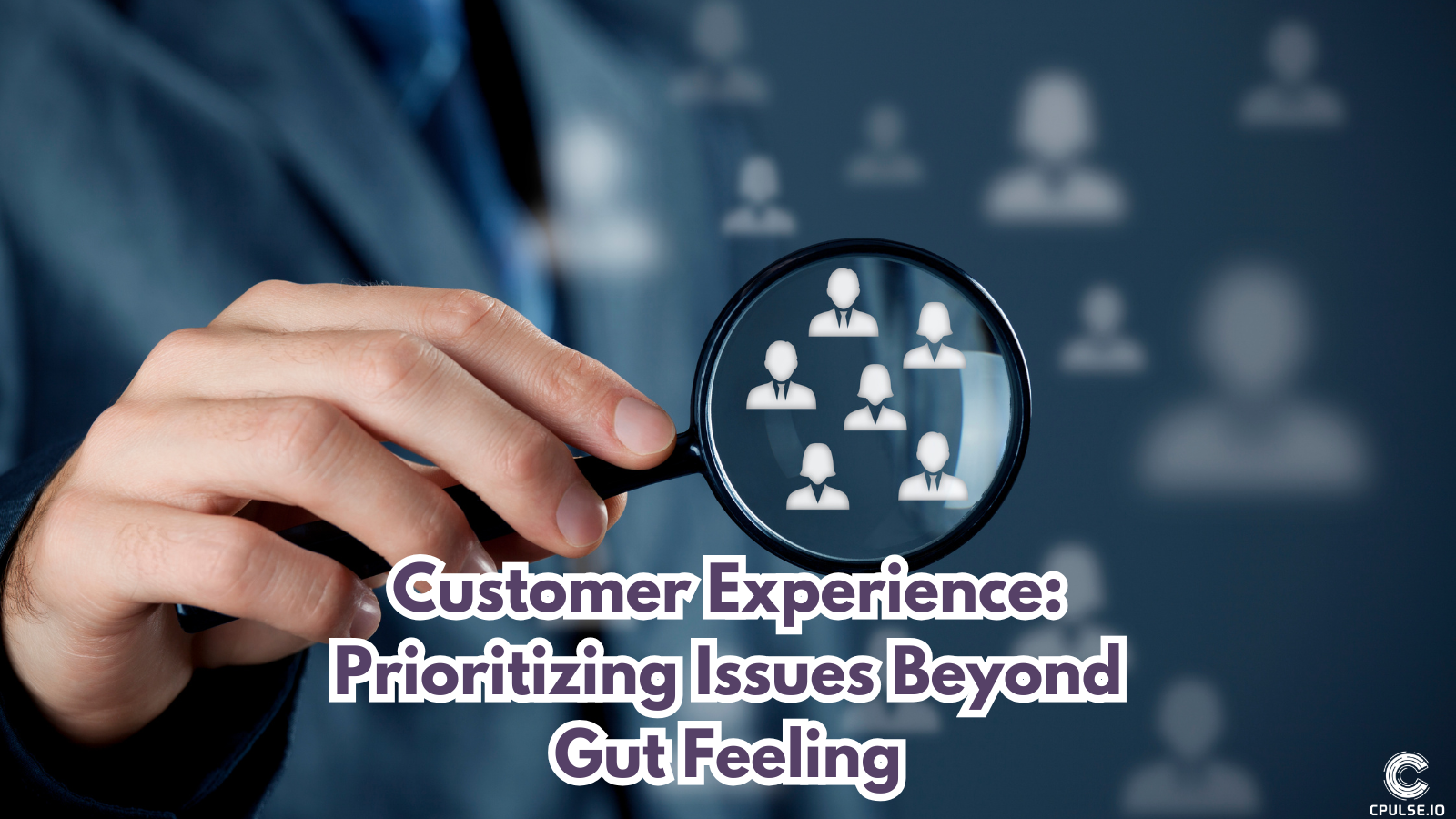Customer Experience: Prioritizing Issues Beyond Gut Feeling
Instinct can only take your CX strategy so far. Learn how to shift from gut feeling to data-driven decision-making with a simple prioritization framework that helps you focus on what truly matters to your customers.

In the age of digital, speed and convenience are no longer enough. Customers hunger for experiences that are personalized, simple, and actively attentive.
But the more expectations increase, the more complex it gets to deal with customer feedback — whether it's complaints, suggestions, or indirect patterns buried in reviews.
And that's where most CX teams hit a roadblock: deciding what to tackle first.
Instinct Isn’t Strategy
Too often, that decision is made on instinct.
On the surface, following your gut might seem to work — even be brilliant. But intuitions, as helpful as they are, aren't always reliable when the stakes are high.
What feels most urgent isn't always what's most critical.
So how do you make the shift from instinct to thoughtful, strategic action?
Why Your Gut Isn't Enough in CX
Our brains are wired for shortcuts.
When sifting through hundreds of pieces of feedback weekly, it's natural to rely on what’s top of mind — the latest complaint, the loudest voice, or something that got under your skin.
But this approach has some major blind spots:
- Recency bias: Prioritizing what just happened over what happens often
- Noise vs. significance: Frequent doesn’t always mean important
- Emotion over reason: Letting frustration outweigh impact
The result? Teams fix the wrong things — while bigger problems quietly build up.
The antidote: Shift from instinct to insight.
Let Data Do the Heavy Lifting
Your customers are already telling you what matters — through tickets, surveys, reviews, and more.
The challenge isn’t collecting the data — it’s making sense of it.
Ask yourself:
- How often does this issue come up?
- Who’s being affected — new users, loyal customers, or high-value clients?
- What’s the emotional tone — confusion, anger, disappointment?
- What’s the downstream impact — on churn, sales, or reputation?
Once you make these connections, the picture changes.
Example:
Two complaints arise — one about pricing transparency, another about missing email confirmations.
Pricing seems more “important” at first glance. But digging deeper reveals that email issues lead to 40% cart abandonment — a serious conversion killer.
The quiet issue had the bigger impact.
That’s the power of data: Prioritize based on facts, not assumptions.
A Simple Framework to Prioritize Smarter
If you want to move beyond gut decisions, adopt this 3-step framework:
1. Centralize & Categorize Feedback
Break down silos. Collect all feedback (tickets, chat logs, NPS, app reviews) in one place.
Group similar themes with tags or AI — e.g., “checkout issues” or “account login problems.”
2. Score Each Issue Objectively
Use 4 key dimensions:
- Frequency: How often it happens
- Sentiment: How customers feel about it
- Customer type: Who’s affected
- Business impact: Retention, conversion, satisfaction?
This lets you compare apples to apples — even across different issues.
3. Revisit Priorities Regularly
Customer needs evolve. New features launch. Old issues fade.
Revisit your prioritization monthly or quarterly. Keep it dynamic.
The best roadmaps are based on current data — not last quarter’s assumptions.
Pro Tip: Learn to Spot What's Next
Great CX teams don’t just respond — they anticipate.
The right tools help you detect weak signals early. For example:
- A small but growing number of users struggling with a new feature?
- Not urgent yet — but it’s trending.
That’s your signal to act before it explodes.
AI platforms like CPulse help spot early trends, sentiment shifts, and weak signals — in real time.
Final Thoughts: Trust Your Gut — But Validate With Data
Instinct isn’t obsolete. It helps surface what deserves deeper exploration.
But it’s not enough when prioritizing issues with real business impact.
Real customer-first decisions come from insight, not opinion.
When you're data-driven:
✅ You solve problems faster
✅ You solve the right problems
✅ You build trust and long-term loyalty
Next time you feel pulled in a dozen directions, pause.
Let the data speak — your customers already are.
